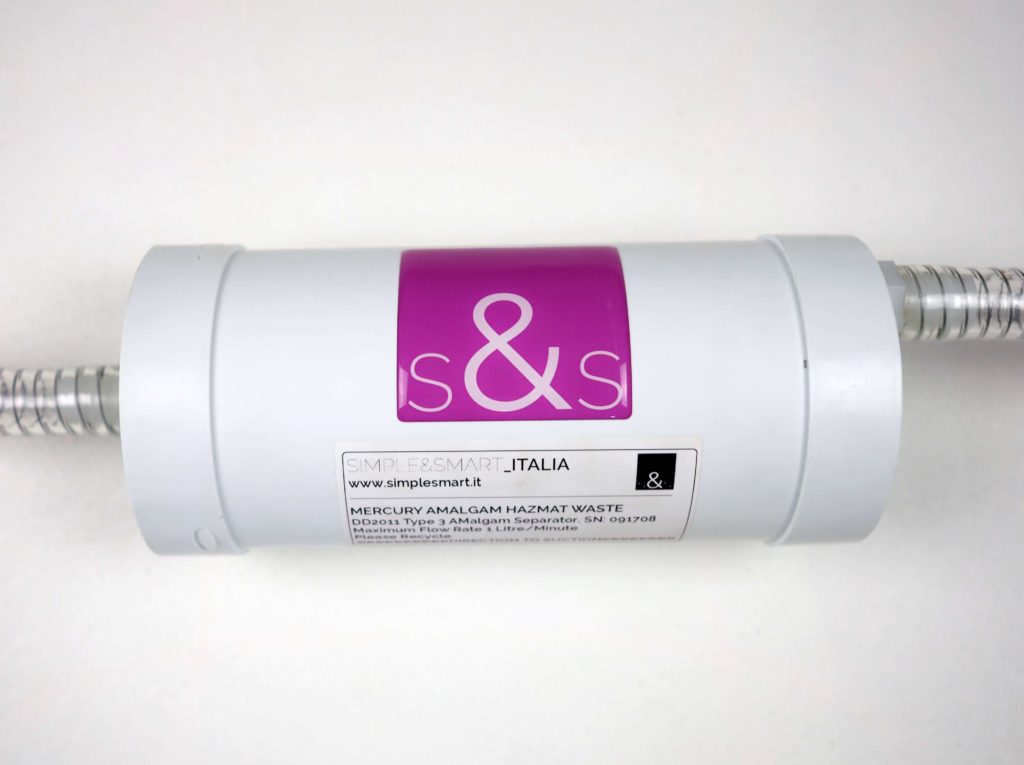What dental practitioners need to know? How can they help dispose of mercury-containing amalgam effectively?
WHY IS MERCURY IN THE ENVIRONMENT A PROBLEM?
Mercury is released into the environment from both natural sources and as a result of human activity; its properties mean that mercury can remain in environment for thousands of years. Mercury can travel long distances when airborne and large amounts also end up in seas and oceans meaning that mercury emissions have a global impact.
HOW DOES MERCURY AFFECT US?
An extremely toxic and persistent metal, mercury is considered one of the World Health Organizatio (WHO)’s top ten chemicals of major public health concern. Mercury has been detected in human blood, urine, milk, and hair.
USE OF DENTAL AMALGAM CONTRIBUTES
The use of mercury in dental amalgam contributes to the accumulation of mercury in the environment globally; the European Commission’s Scientific Committee on Health and Environmental Risks (SCHER) confirmed that amalgam poses environmental risks. Dental amalgam is the largest use of mercury in the European Union and a significant source of pollution.
INTERNATIONAL AND EU LEGISLATION ON MERCURY
The International Convention on Mercury, or “Minamata Convention”11 (named after Minamata, Japan – the location of the worst ever case of mercury pollution) was signed in October 2013 and entered into force in August 2017. Its objective is to protect the human health and the environment from anthropogenic emissions and releases of mercury and mercury compounds.
EU MERCURY REGULATION
A 2012 study commissioned by the European Commission concluded that the most efficient and effective way for the EU to meet its objectives concerning mercury use in dental amalgam would be to phase out its use and for the Member States to better enforce environmentally safe waste management.
- From 1 January 2019, dental amalgam shall only be used in pre-dosed encapsulated form. The use of mercury in bulk form by dental practitioners shall be prohibited.
- From 1 July 2018, dental amalgam shall not be used for dental treatment of deciduous teeth, of children under 15 years, and of pregnant or breastfeeding women, except when deemed strictly necessary by the dental practitioner based on the specific medical needs of the patient.
- By 1 July 2019, each Member State shall set out a national plan concerning the measures it intends to implement to phase down the use of dental amalgam. Member States shall make their national plans publicly available online and shall transmit them to the Commission within one month of their adoption.
- From 1 January 2019, operators of dental facilities in which dental amalgam is used or dental amalgam flings or teeth containing such fllings are removed, shall ensure that their facilities are equipped with amalgam separators for the retention and collection of amalgam particles, including those contained in used water. Such operators shall ensure that:
(a) Amalgam separators put into service from 1 January 2018 provide a retention level of at least 95% of amalgam particles.
(b) from 1 January 2021, all amalgam separators in use provide the retention level specified in point (a)
Amalgam separators shall be maintained in accordance with the manufacturer’s instructions to ensure the highest practicable level of retention.

IMPLICATIONS OF THE MERCURY REGULATION FOR DENTAL PRACTITIONERS IN THE EU
As of 1 January 2018, releasing amalgam waste into the environment is prohibited under any circumstances. Dentists are responsible for ensuring that any amalgam waste released is collected separately and managed in an environmentally safe manner.
On 1 July 2018, an EU-wide dental amalgam phase-out for vulnerable populations entered into force. This phase-out applies for pregnant or breastfeeding women, and children under 15 years old (unless deemed strictly necessary by the practitioner on the ground of special medical needs).
After 1 January 2019, dental facilities using dental amalgam or removing dental amalgam fllings must ensure that they are equipped with amalgam separators for the retention and collection of amalgam residues, including dental amalgam particles and those contained in used water.
Amalgam separators shall provide a retention level of at least 95% of amalgam particles, and be maintained accordingly. Dental practitioners are also obliged to use pre-dosed encapsulated dental amalgam – the use of mercury in bulk shall be prohibited.
It is already prohibited to use amalgam for the most vulnerable populations in all EU countries; mercury-free alternatives are therefore no longer optional for these patients. Dental practitioners are invited to not only implement these requirements but to also contribute to overall EU and global objectives towards phasing out mercury emissions, releases, and exposure.
As always, we at Simple&Smart have sought a simple, effective and economical solution for our customers and have become the exclusive distributors in Italy of the DDS2011 The Simple One ® amalgam separator.
This US made separator is extremely simple to install and replace, has no electronic components and is delivered directly to the suction pipe; all this at a truly competitive price.
Obviously it is a certified product (ISO 11143: 2008.), And as required by law, our filter retains more than 95% (99.6 to be exact) of amalgam residues containing mercury.
